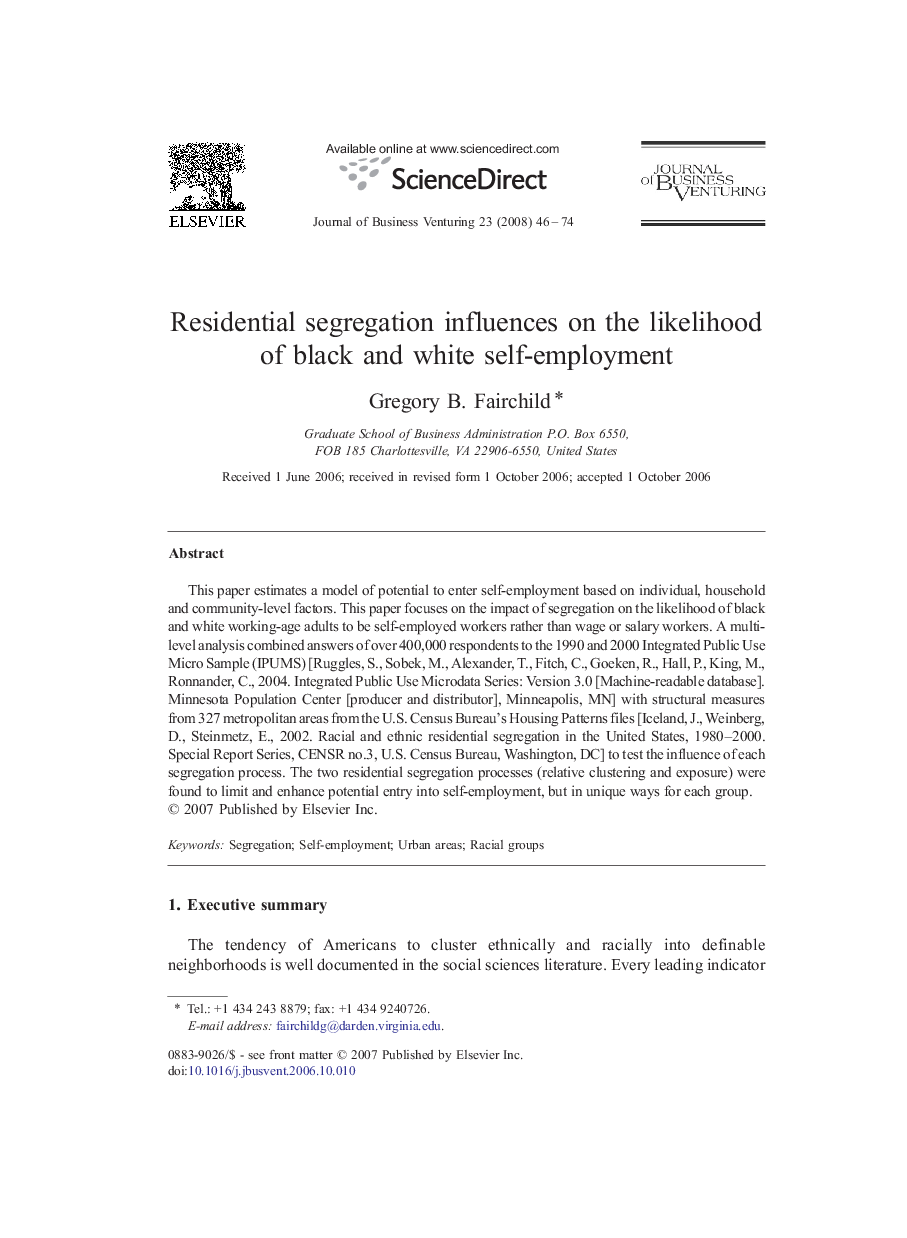| Article ID | Journal | Published Year | Pages | File Type |
|---|---|---|---|---|
| 1019622 | Journal of Business Venturing | 2008 | 29 Pages |
This paper estimates a model of potential to enter self-employment based on individual, household and community-level factors. This paper focuses on the impact of segregation on the likelihood of black and white working-age adults to be self-employed workers rather than wage or salary workers. A multi-level analysis combined answers of over 400,000 respondents to the 1990 and 2000 Integrated Public Use Micro Sample (IPUMS) [Ruggles, S., Sobek, M., Alexander, T., Fitch, C., Goeken, R., Hall, P., King, M., Ronnander, C., 2004. Integrated Public Use Microdata Series: Version 3.0 [Machine-readable database]. Minnesota Population Center [producer and distributor], Minneapolis, MN] with structural measures from 327 metropolitan areas from the U.S. Census Bureau's Housing Patterns files [Iceland, J., Weinberg, D., Steinmetz, E., 2002. Racial and ethnic residential segregation in the United States, 1980–2000. Special Report Series, CENSR no.3, U.S. Census Bureau, Washington, DC] to test the influence of each segregation process. The two residential segregation processes (relative clustering and exposure) were found to limit and enhance potential entry into self-employment, but in unique ways for each group.
